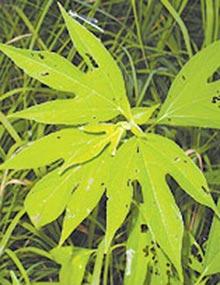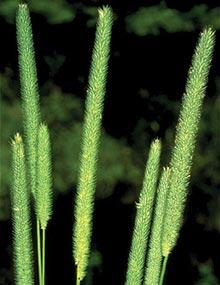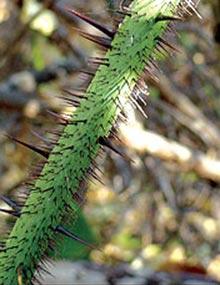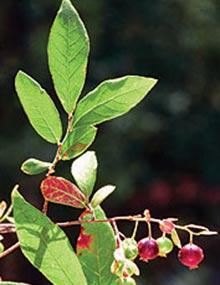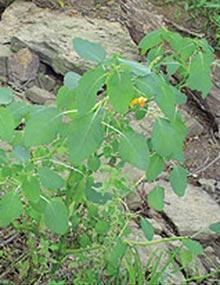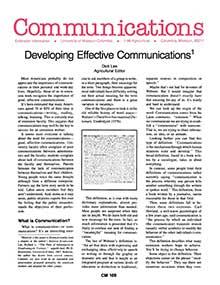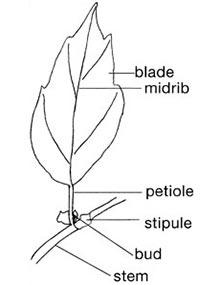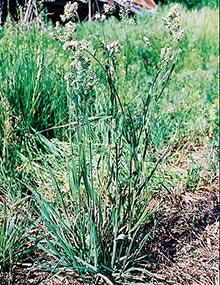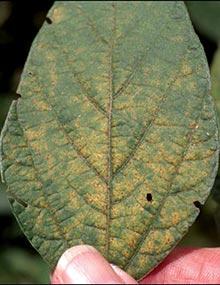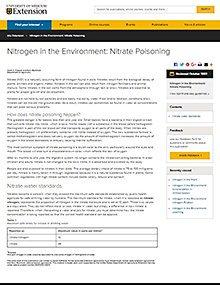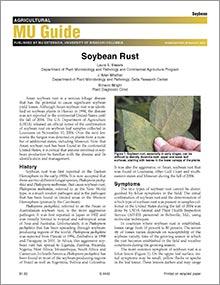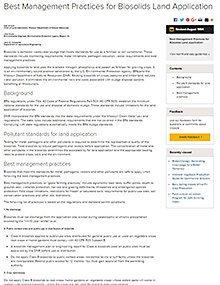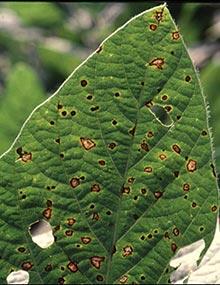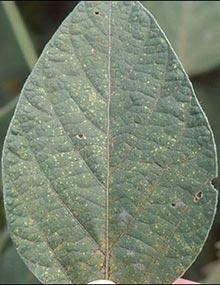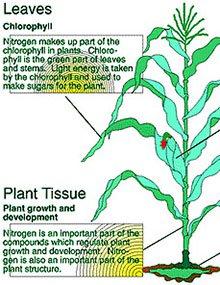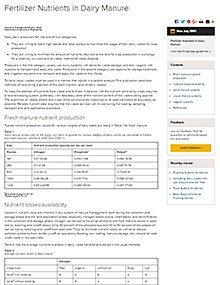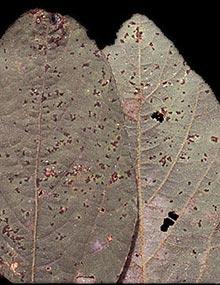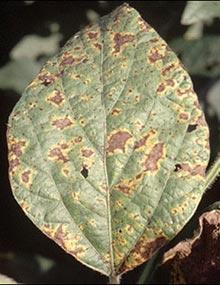Quail-Friendly Plants of the Midwest, Page 51
Reviewed
Sunflowers exhibit a variety of characteristics, but most of the commonly encountered species have triangular to lanceolate leaves, rough leaf surfaces and conspicuous yellow flowers.
Quail-Friendly Plants of the Midwest, Page 19
Reviewed
Giant ragweed attains a considerable height, often in excess of 7 feet. Its leaves are three-lobed (sometimes five-lobed), and its stems may be 3/4 inch or more in diameter at the plant base.
Quail-Friendly Plants of the Midwest, Page 54
Reviewed
Timothy is a cool-season bunch grass. By late spring it can be readily identified by the blue-green, cylindrical seed head resembling a small cattail. It has an elongated ligule at the base of the leaf, with a notch on each side.
Quail-Friendly Plants of the Midwest, Page 22
Reviewed
Greenbriers grow as stout vines, climbing with the aid of tendrils that arise in pairs at the base of leaf stalks. The flowers are small and green and grow in clusters of 5 to 26 flowers on long stalks.
Quail-Friendly Plants of the Midwest, Page 57
Reviewed
Three species of wild bean occur in the Midwest. Each is a somewhat small plant with twining vines and relatively small leaves composed of three leaflets. Seeds are present in hairy pods.
Quail-Friendly Plants of the Midwest, Page 25
Reviewed
Huckleberries are stiffly branched leafy shrubs or small trees, often found in extensive colonies, from 6 inches to 10 feet tall. The alternate, simple leaves are 3/4 to 3 inches long and 1/2 to 1 inch wide. The fruits are blue to black berries with a faint whitish coating.
Quail-Friendly Plants of the Midwest, Page 28
Reviewed
Jewelweed commonly reaches 18-24 inches. Leaves have scalloped edges and fleshy stems that exude a clear, watery gel-like liquid when crushed. Flowers are orange (I. capensis) or pale yellow (I. pallida).
Developing Effective Communications
Reviewed
Most Americans probably do not appreciate the importance of communication in their personal and workday lives. Hopefully, those of us in extension work recognize the importance of good, effective communications.
Quail-Friendly Plants of the Midwest, Page 31
Reviewed
Little bluestem is a native grass that occurs in clumps with fine leaves less than 1/4 inch wide. Seed stalks are commonly 2 to 3 feet tall. Stems are hairy and flattened near the base. Seeds are light and fluffy.
Quail-Friendly Plants of the Midwest, Page 02
Reviewed
Refer to this glossary for definitions of words and phrases related to plants.
Writing Columns
Reviewed
Before writing a column, think about purpose, audience, content and structure. Visit our website today to learn more about writing columns.
Quail-Friendly Plants of the Midwest, Page 34
Reviewed
Orchard grass is a cool-season bunch grass. Its leaves have a bluish cast. Close inspection of the leaf collar reveals a flattened shape and membranous ligule. Its rather distinctive seed heads form by late May. Height at maturity averages 3 feet.
Soybean Rust, Page 3
Revised
Downy mildew (Peronospora manshurica)
Soybean Rust, Page 6
Revised
Soybean rust (Phakopsora pachyrhizi)
Soybean Rust
Reviewed
Asian soybean rust is a serious foliage disease that has the potential to cause significant soybean yield losses. Anyone involved in soybean production needs to be familiar with the disease and its identification and management.
Soybean Rust, Page 4
Revised
Frogeye leaf spot (Cercospora sojina)
Soybean Rust, Page 7
Revised
These photos show the disease stages of soybean rust, which can be difficult to identify, especially in the early stages.
Nitrogen in the Plant
Reviewed
Nitrogen plays an important part in many essential functions. Visit our website to learn about Nitrogen in the Plant.
Fertilizer Nutrients in Dairy Manure
Reviewed
Many dairy producers fall into one of two categories:
Soybean Rust, Page 2
Revised
Bacterial pustule (Xanthomonas axonopodia pv. glycines)
Benefits and Risks of Biosolids
Reviewed
Biosolids are domestic wastewater sludge that meet standards for beneficial use as fertilizer. Visit our site to learn the Benefits and Risks of Biosolids.
Soybean Rust, Page 5
Revised
Septoria brown spot (Septoria glycines)

